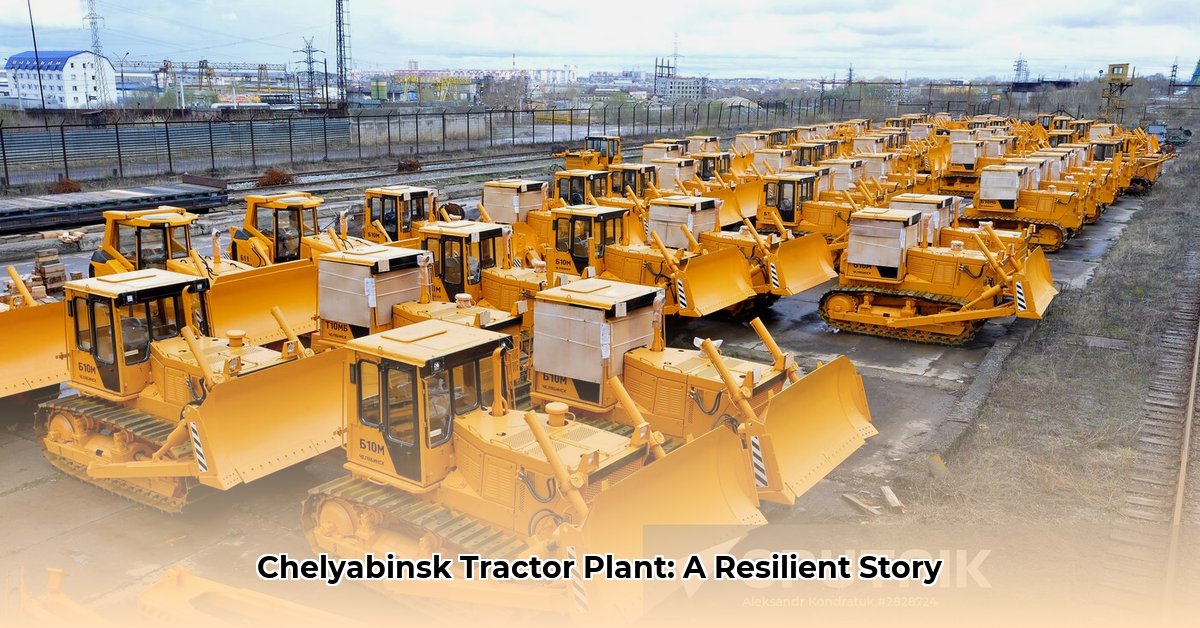
The Chelyabinsk Tractor Plant (ChTZ), a cornerstone of Russian heavy industry, offers a compelling case study in industrial resilience and adaptation. Founded in 1933, its history is marked by periods of immense production, wartime mobilization, and recent challenges stemming from international sanctions and a major industrial accident. This analysis explores ChTZ's evolution, examining its technological capabilities, geopolitical vulnerabilities, and prospects for future success.
From Agricultural Machinery to Military Production: ChTZ's Early Years and WWII
Initially focused on agricultural machinery, ChTZ rapidly expanded its production, exceeding 100,000 tractors by 1940. The Second World War, however, fundamentally altered its trajectory. ChTZ became a vital component of "Tankograd," the Soviet Union's vast network of tank factories. The plant's swift transition to producing tanks, engine components, and ammunition underscores its remarkable adaptability and the dedication of its workforce under immense pressure. This period cemented ChTZ's place in Soviet industrial history, demonstrating both its mass production capabilities and the ingenuity of its engineers and workers.
Post-War Growth and Diversification: A Strategy for Long-Term Sustainability
Following WWII, ChTZ resumed tractor production while simultaneously pursuing diversification. By 1984, the plant achieved a significant milestone, producing its millionth tractor. However, recognizing the need for long-term stability, ChTZ expanded into engine manufacturing, forklift production, and even road vehicles. This forward-thinking approach proved crucial for navigating future economic fluctuations, showcasing a proactive approach to risk mitigation. How did this diversification strategy affect the plant's overall resilience? The answer lies in its ability to weather subsequent economic storms.
Navigating Geopolitical Headwinds: Sanctions and Industrial Accidents
Recent years have presented unprecedented challenges for ChTZ. International sanctions imposed in 2022 severely disrupted supply chains, impacting production levels. Complicating matters further, a devastating fire and explosion in 2023 caused substantial damage and further production disruptions. These events highlight the vulnerability of even well-established industrial giants to unforeseen circumstances and the impact of geopolitical instability. What strategies can ChTZ employ to overcome these obstacles? The answer requires a multifaceted approach.
Analyzing the Current Situation: Challenges and Opportunities
The future of ChTZ is inextricably linked to its ability to overcome significant challenges. The plant faces a monumental rebuilding effort following the 2023 accident, requiring substantial investment and expertise. Re-establishing reliable supply chains amidst ongoing sanctions remains a formidable hurdle. Yet, opportunities exist. Diversification into new product lines can potentially offset the impact of sanctions, while exploring new export markets beyond the reach of restrictions could stimulate growth. ChTZ's success hinges on its ability to leverage existing expertise while embracing technological advancements and strategic partnerships.
Stakeholder Analysis: A Complex Web of Interests
The future of ChTZ is not solely determined by internal factors. Several key stakeholders hold significant influence:
| Stakeholder | Short-Term Goals | Long-Term Goals | Potential Challenges |
|---|---|---|---|
| Uralvagonzavod (parent) | Immediate repairs, secure alternative suppliers | Product diversification, market expansion beyond Russia | Securing funding, managing regulatory hurdles |
| Russian Government | Financial aid for reconstruction, policy support | Fostering technological self-sufficiency in industry | Balancing economic recovery with international relations |
| International Community | Observing compliance with sanctions, impact analysis | Assessing the broader impact of sanctions on Russian industry | Navigating geopolitical complexities, maintaining neutrality |
The Impact of Sanctions on Russian Heavy Industry: A Case Study in ChTZ
ChTZ's experience provides a microcosm of the broader impact of sanctions on Russian heavy industry. The plant's pre-sanctions reliance on foreign-sourced components and technologies proved to be a significant vulnerability. While ChTZ has adapted by pursuing domestic alternatives, the quality and technological sophistication often lag behind previously imported components. This underscores the challenges faced by Russia in achieving technological self-sufficiency in heavy industry.
ChTZ's Future: A Path Towards Resilience
ChTZ's history demonstrates remarkable resilience, having weathered the storms of war and peace. However, the current confluence of challenges—sanctions, accidents, and geopolitical instability—demands innovative solutions. Its ability to secure sufficient resources, embrace technological advancements, and strategically adapt will determine its future success. The plant's story remains unfinished, and its ultimate outcome depends upon a complex interplay of internal strategies and external factors.